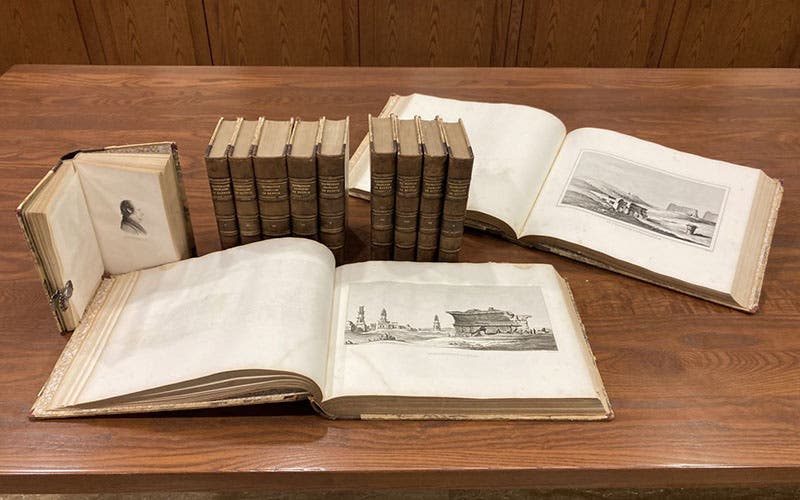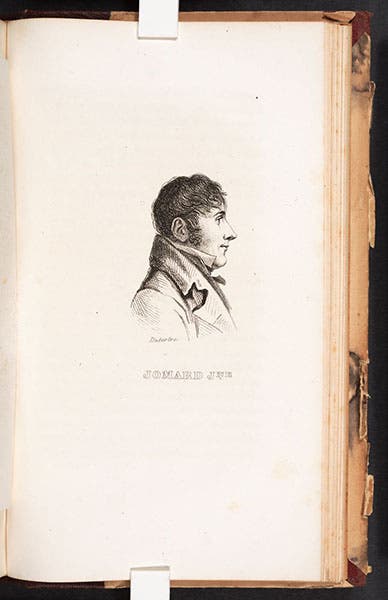Scientist of the Day - Louis Reybaud

All 12 volumes of Histoire scientifique et militaire de l'expédition française en Egypte, by Louis Reybaud, 1830-36, including 10 octavo text vols, and two oblong quarto atlases; the opened text volume at left shows the portrait of André Detertre, who did all of the 160 portraits in the 10 volumes (Linda Hall Library copy)
Marie Roch Louis Reybaud, a French writer, and later politician, was born Aug. 15, 1799, just one week before Napoleon left his Egyptian army and savants in the lurch and secreted himself back to Paris to become First Consul. That sequence of events probably did not imprint itself onto baby Louis, but it is interesting that, thirty years later, when he decided to make a splash on the French literary scene, Reybaud chose to write and publish a popular history of Napoleon's Egyptian expedition, the Histoire scientifique et militaire de l'expédition française en Égypte (1830-36). The work was a great success, and prompted Reybaud to publish hundreds of later titles, most of which the world could have done without.
To understand the occasion for Reybaud’s Histoire, you need to recall that the Napoleonic expedtion lasted for some three years (1798-1801) for the 150 or so savants. After they returned to France, it took them 27 years to complete publication of their findings in the Description de l’Égypte (1809-1828), although Dominique-Vivant Denon beat them all to market with his illustrated book of 1802, Voyage dans la Basse et la Haute Egypte (Voyage into Lower and Upper Egypt). But by 1829, everything was in print that would officially be in print, so what better time to publish a people’s version of the Description. That's what Reybaud’s work was. It had 10 octavo text volumes, and two oblong quarto atlas volumes that contained over 300 engravings. Most of these engravings were taken from Denon's book, although some seem to have been coopted from the Description. They were not as large as the Denon originals, but they were plenty large enough for a coffee-table book.
The real novelty of Reybaud’s collection lay in the 160 engraved portraits scattered throughout the 10 text volumes. These had never before been published.
All were engravings based on pencil drawings made on the spot (i.e., in 1798-1801 in Egypt), by expeditionary artist André Dutertre. In many cases, these are the only portraits we have of expedition members.
We show here the portrait of Denon, which forms a frontispiece to vol. 6 (fifth image); a portrait of Edme-François Jomard, who would edit the Description (sixth image); and that of the artist Dutertre, which is of course a self-portrait (eighth image).
We have written posts on dozens of the savants, such as Jean-Baptiste Lepère and Edouard Devilliers du Terrage (seventh image), and in every case, we have included the portrait that Reybaud published in his Histoire. It would be hard to tell any of the stories without those portraits.
Just because we could, we posed all 12 volumes of Reybaud’s work on a reading table in our rare book reading room (first image). They aren’t quite as impressive as the 23 volumes of the Description. (see our post on Jomard for a collective photo of the Description) But they are handsome enough to be keepers.
William B. Ashworth, Jr., Consultant for the History of Science, Linda Hall Library and Associate Professor emeritus, Department of History, University of Missouri-Kansas City. Comments or corrections are welcome; please direct to ashworthw@umkc.edu.













